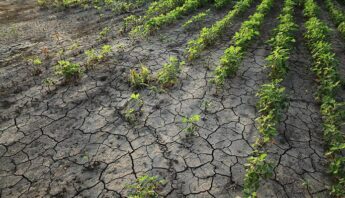With the 2018 growing season approaching, agricultural states across the country are stepping up to ensure farmers don’t experience the same pesticide drift epidemic that wreaked havoc on farmland last summer.
Application of the drift-prone herbicide in question, dicamba, led to an estimated 3.6 million acres of crop damage last year after a rushed approval of Monsanto’s new dicamba-resistant seed line.
With the 2018 growing season approaching, agricultural states across the country are stepping up to ensure farmers don’t experience the same pesticide drift epidemic that wreaked havoc on farmland last summer.
Application of the drift-prone herbicide in question, dicamba, led to an estimated 3.6 million acres of crop damage last year after a rushed approval of Monsanto’s new dicamba-resistant seed line.
State restrictions taking hold
Arkansas is leading the charge of states standing up against dicamba. Last week, state lawmakers approved a plan to ban the herbicide from April 16 through October 31, after receiving nearly 1,000 farmer complaints about the weed killer drifting onto fields and damaging non-dicamba resistant crops.
Minnesota has imposed restrictions on how dicamba can be used in 2018, setting a June 20 cutoff date for applying the herbicide and prohibiting application when the expected temperature is above 85 degrees. The state received over 250 complaints from growers in 49 different counties, and researchers estimate 265,000 acres of farmland were affected.
North Dakota and Missouri have established similar restrictions. In several other states, though protective policy hasn’t been enacted, farmers and farm organizations are in conversation about how to avoid another dicamba drift disaster in the coming year.
Dicamba has been the hot topic at farm conferences like the Nebraska Crop Management Conference and the Practical Farmers of Iowa Annual Conference.
Monsanto in the spotlight
In addition to action at the state level, 85 national farm organizations and partners including PAN have urged the U.S. Department of Agriculture (USDA) and the Environmental Protection Agency (EPA) to take action at the national level to protect farm families from crop loss.
Predictably, Monsanto isn’t happy about the backlash the damaging herbicide is facing, and is going to great lengths to ensure dicamba stays on the market. The corporation’s first response to reports of drift was, ludicrously, to blame farmers. Now, they’re presenting a legal challenge to Arkansas’ state ban and have begun offering cash back to U.S. farmers who buy their seed/weedkiller package for the upcoming season, looking to incentivize continued use of the herbicide at the same time regulators are trying to prohibit it.
These state-level restrictions, especially the ban in Arkansas, are welcome steps forward in the fight against Monsanto and this damaging herbicide.
Weed scientists predict that continued use of dicamba with seeds engineered to tolerate the herbicide will result in the emergence of herbicide-resistant superweeds. History shows us that the agrichemical industry will then “remedy” the problem with more GE seeds and drift-prone and dangerous chemicals.
We call this the pesticide treadmill, and we’ve already seen it happen when weeds became resistant to glyphosate after widespread adoption of “RoundUp Ready” crops — leading to the introduction of seeds resistant to herbicides like dicamba and 2,4-D.
You can join the conversation today, and tell EPA to revoke registration of all dicamba formulations for use on soy, the main crop the weedkiller is applied to.







